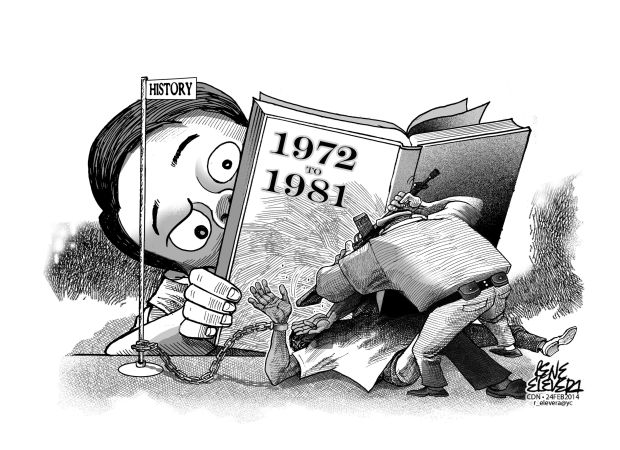President Benigno Aquino III’s Feb. 25 visit to Cebu to lead the 28th anniversary celebration of the 1986 Edsa People Power Revolution is significant for several reasons.
A commemoration outside the capital city puts Malacañang at the forefront of rebutting historical revisionists who mock the bloodless revolt as a mob movement restricted to Manila, not a nationwide uprising.
Bringing the revolution to Cebu, so to speak, salutes the role that the place and its people played in resisting the strongman rule of the late Ferdinand Marcos and in reclaiming our democracy.
Corazon Aquino, the President’s mother found sanctuary in Cebu City’s Carmelite Monastery before flying back to Manila and taking her oath of office as the country’s head when People Power ended the Marcos regime.
In her turn, Nenita Cortes Daluz, radio broadcaster and opposition assemblywoman, denounced the abuses of the dictatorship before crowds in protest rallies at the Plaza Independencia.
For his part, Redemptorist priest and social justice activist Rudy Romano—before he became one of martial law’s desaparecidos— worked with students and theater actors to keep alive the thirst for freedom at the Fuente Osmeña Circle.
Reenacting in Cebu the convergence of various groups at Edsa should accelerate the work of incorporating the story and lessons of martial law into school curricula across the nation.
This change in formal learning is required by the Human Rights Victims Reparation and Recognition Act that the President signed into law a year ago.
The law gives schools two years from the date of the creation of its implementing rules and regulations (IRR) to roll out the new lessons.
Is the IRR already available? How far have the Commission on Higher Education and Department of Education gone in executing it?
President Aquino scheduled Edsa in Cebu in the context of his whirlwind inspection of areas under rehabilitation after they were wrecked by supertyphoon Yolanda and the Bohol earthquake last year.
The successful rehabilitation of the ravaged communities would be a fruition of the promise of a better life that we reclaimed at Edsa in 1986.
We hope that the President’s visit would hasten the otherwise slow pace of rebuilding.
Then, survivors and every Filipino would better appreciate Edsa and the lessons of martial law—seeing that they owe their improved situation to our polity, seeing that the revolt against a tyrant restored the democratic space that made possible a revolt against poverty and calamity.
